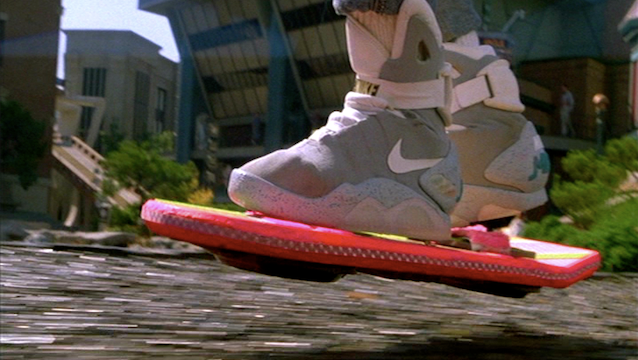The Bittersweet Taste of Philae’s Limited Success
We’ve learned more about comets than ever before thanks to it. But we would’ve learned a lot more, if not for one unfounded fear.
“Every dreamer knows that it is entirely possible to be homesick for a place you’ve never been to, perhaps more homesick than for familiar ground.”
–Judith Thurman
It’s done! After a ten year journey through space, tracking and following a comet, the Rosetta spacecraft launched its on-board lander, Philae, which then successfully became the very first man-made spacecraft to make a soft landing on a comet!

Unsurprisingly, this was a tremendously difficult task, and after ten years hibernating in interplanetary space, not everything went according to plan. Although all ten science instruments were functioning properly, an outstanding condition to be in for when it landed on the comet, two of the instruments that were vital to Philae landing optimally on the comet itself didn’t work properly:
- The descent thrusters didn’t fire, failing to bind the spacecraft to the comet, preventing a recoil from the impact generated by the downwards pull of the comet’s gravity.
- The harpoons that were supposed to fire upon touch-down, anchoring the probe into the comet’s surface, also failed to fire.
As a result, Philae bounced across the comet’s surface, eventually landing well off-target.

The nice thing about the targeted site, mind you, wasn’t that it was the flattest part of the comet, nor that it was the best location for communicating with Earth. It wasn’t even the case that it was the most geologically interesting part of the comet to land on! Rather, the site was chosen because it was good enough for those three considerations, but also because it would allow Philae’s solar panels to receive copious amounts of sunlight, allowing it to remain alive well after it had exhausted its primary battery.

Unfortunately, the double equipment failure led to the spacecraft landing much harder on the comet than anticipated, bouncing many kilometers off course, and coming to rest in a place that was never anticipated. Its eventual resting place came to be against a crater wall, where it receives only a quarter of the sunlight necessary to sufficiently charge it.
If you were the spacecraft operator in this situation, what would you do? Tough question, isn’t it?
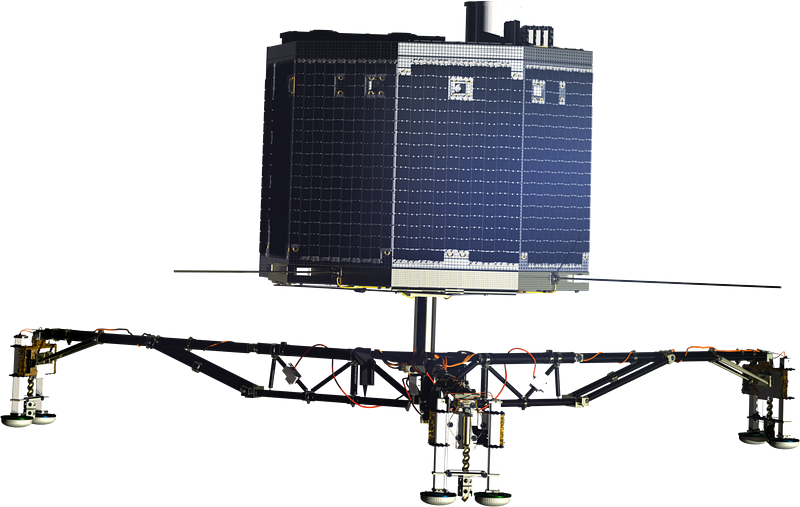
Well, what the Philae team did was really the best possible thing they could have done, given the constraints of what they had to work with. First, they attempted to use the robotic legs to orient the solar panels to better point towards the Sun, so that perhaps they would have a chance of collecting more sunlight. This was a maneuver that would be effective not necessarily for the short-term future, but for the long term: as the comet that it’s on starts to heat up and lose mass as it approaches the Sun — where it’ll lose around 100 kg every second once it develops a tail — there’s a chance that Philae could get a new lease on life, and possibly meet the full suite of its designed scientific goals.

After all, its goals included long-term monitoring of the comet, including seeing from the surface how the comet releases gas and dust, what volatiles and/or organics are expelled, what types of materials lie beneath the surface in the comet’s core, and geologically what accounts for its low density: whether there’s porous ice in there, whether the landing region is representative of the rest of the comet, or whether there’s another (perhaps more surprising) explanation in store.
Based on where Philae landed, however, it’s unlikely that we’ll ever hear from it to find these answers again. Because unless those solar panels wind up getting sufficient illumination to wake it up again — which would only come about as a result of some awfully serendipitous behavior by the comet’s nucleus as it nears the Sun — all we’d have from Philae were the 60-or-so hours of powered operation that its primary battery could provide. (But hey, you never know what might happen!)
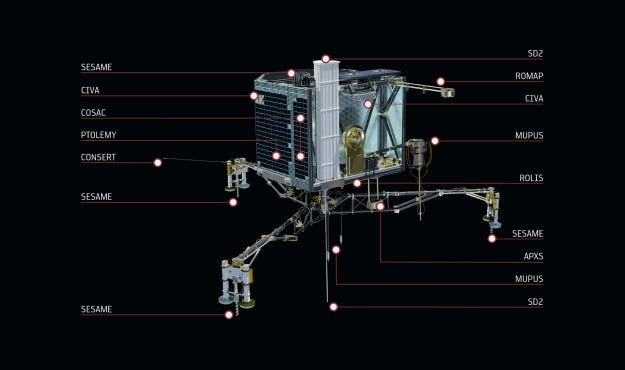
Thankfully, the other great decision that Philae’s operators made was that, given the results of the landing, they simply decided to collect as much data from the functioning scientific instruments as possible in the limited amount of time they had power! This includes from the ROMAP (Rosetta Magnetometer and Plasma Monitor) instrument, which will measure whether the comet has a magnetic field or not; COSAC (the Cometary Sampling and Composition experiment), which not only detected organic molecules (which exist, as expected) on the comet, but will be able to find what types and chiralities of amino acids exist;

the Ptolemy instrument, which will compare the relative abundances of isotopes found on the comet to samples known to have originated from our Solar System; and APXS (the Rosetta Alpha Particle X-Ray Spectrometer), which can tell us exactly where in the Solar System — the Kuiper Belt or the Oort cloud, for instance — this comet originated from.
And although the analysis must still be performed on a lot of the data, there’s so much we’ve already learned, including:
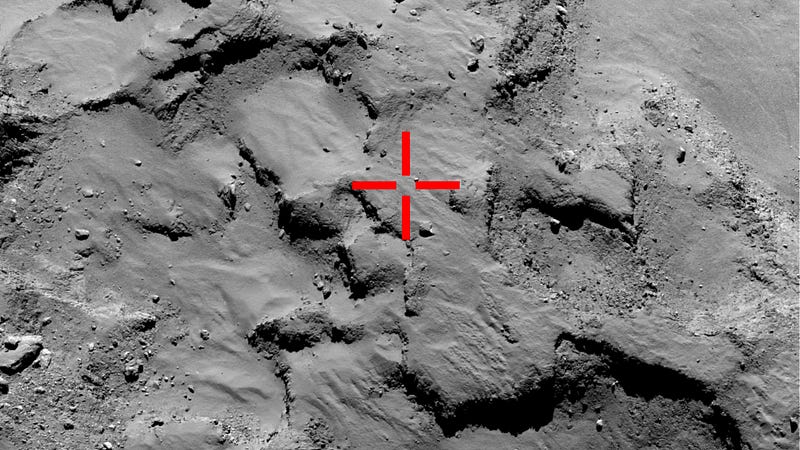
- From the MUPUS (Multi-Purpose Sensors for Surface and Sub-Surface Science) instrument, the comet’s surface is much harder just 10–20 cm below the surface rubble than we anticipated; even at maximum power, the drill couldn’t penetrate it! (And yes, it should have been named MUPUSSSSS!)
- From SESAME (the Surface Electrical, Seismic and Acoustic Monitoring Experiment), we’ve learned that the comet is much harder — like a single frozen block of ice — than we anticipated. If this is true, and the physical dimensions and mass of the comet are what we’ve measured them to be, we’ve got some interesting science to figure out. There’s now a puzzle for why and how the comet’s overall density is so low!
- And the ROLIS and CONSERT instruments took photos and radio measurements that should allow us to map in great detail not only large amounts of the comet’s surface, but also the comet’s interior when combined with data from the Rosetta spacecraft.
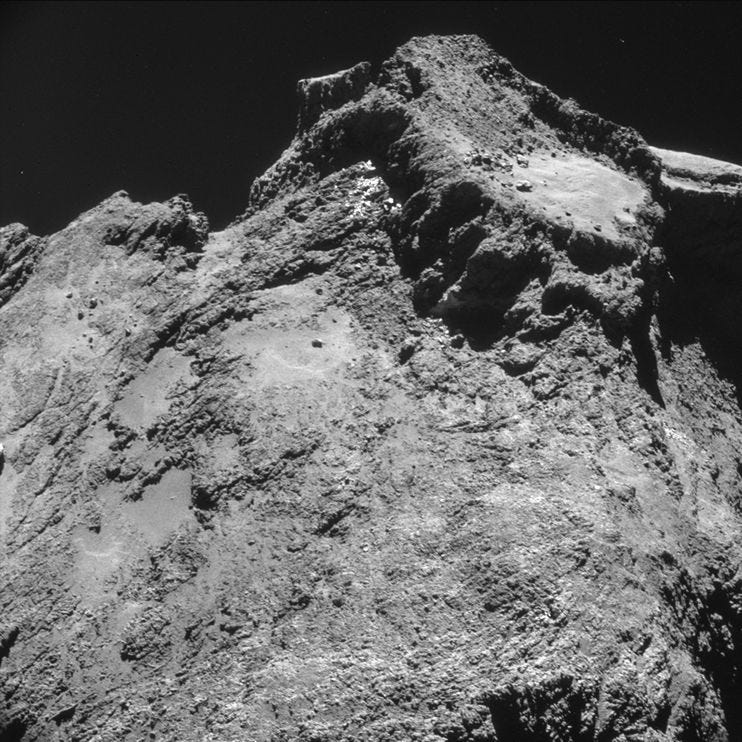
You can view the full instrument list and their specifications here, including about CIVA, the panoramic camera that took the image below.
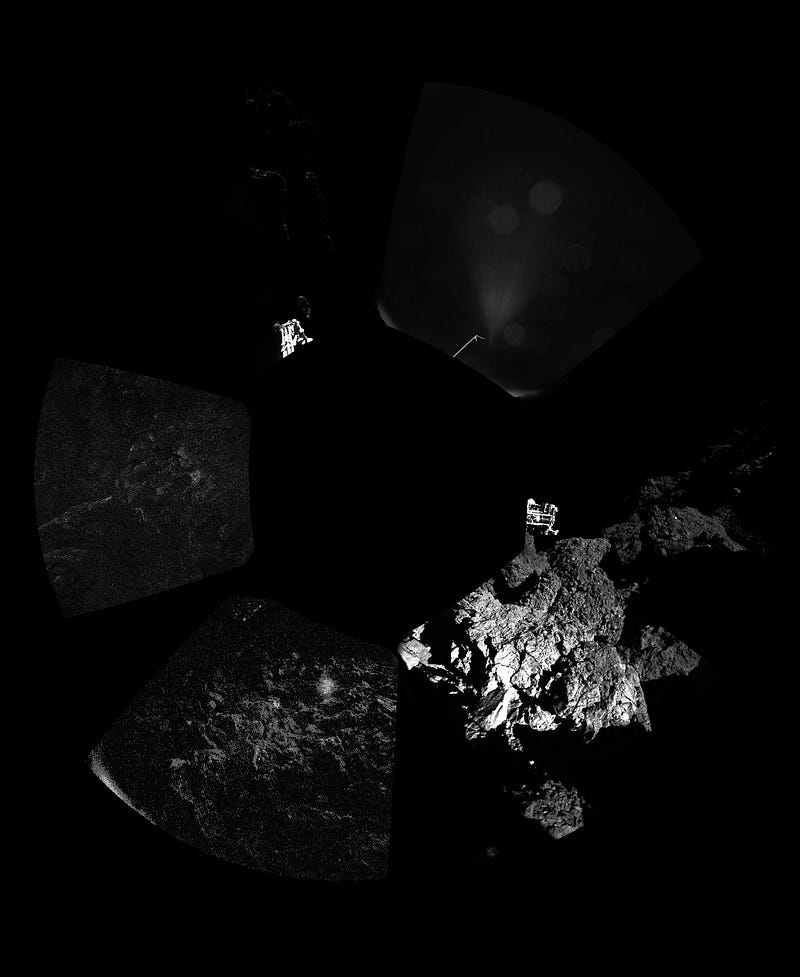
But because of the harpoon failures and the resultant bounces that Philae took, it’s very likely done with all the science it will get to do. Admittedly, it had an amazing run, collected some incredibly important data, and the science will forever change what we know about the most distant objects that make up our Solar System. There’s even still a chance that when the comet nears the Sun, Philae will start getting enough sunlight on its solar panels to recharge its batteries, and wake it from hibernation, where it can continue its mission once again.
But we could have done even better, with one simple change.

Rather than choosing to make this lander solar powered, we could have chosen, instead to equip it with a nuclear-powered radioactive source. This is proven technology that’s been used in space missions for more than 40 years, including on all the Mars rovers (even the ones that also have solar panels), because you’ve got to keep the instruments warm even when there is no sunlight. The radioisotope source that’s most commonly used is Plutonium-238, which has a half-life of 88 years, and a single kilogram of this isotope emits around 500 Watts of power. Here’s what NASA says about it:
Radioisotope power systems are generators that produce electricity from the natural decay of plutonium-238, which is a non-weapons-grade form of that radioisotope used in power systems for NASA spacecraft. Heat given off by the natural decay of this isotope is converted into electricity, providing constant power during all seasons and through the day and night.
And what’s more, is that — despite those who’ll argue otherwise — there really is extraordinarily little risk to the environment or to humans from using a radioactive nuclear source in this capacity.

- Plutonium-238 is not weapons-grade material. It is not fissionable and is one of the most benign isotopes produced as a product of traditional nuclear reactors.
- Plutonium-238 is an alpha-emitter, meaning that it’s the most easily shielded type of radiation, stoppable by a sheet of paper. The only harm that can possibly come to a human through it is via inhalation; both the outer layer of human skin (in case of contact) and the insolubitity of the plutonium in your digestive tract (in case of ingestion) will protect you from any radiation.
- And even in the event of a launch failure — the most catastrophic scenario — the resultant risk to humanity [citation here, from Goldman et al., 1991] would likely result in zero additional cancer deaths worldwide.
From the study of the Ulysses probe (launched in 1990), which carried 24 pounds (11 kg) of Plutonium-238, even explosion shortly after launch would have resulted in at most three deaths, and at that with a 0.0004% chance.

We store and package this Plutonium-238 in a dioxide (bonded to two oxygen atoms) form, so that it’s insoluble in water, and extraordinarily unlikely have any negative health or environmental impacts.
Yet fear-mongering articles like this persist, and people continue to unfoundedly fear what should be (and used to be) the standard for space missions to the outer Solar System. Probes like the Pioneer 10 and 11 and Voyager 1 and 2 used Plutonium-238 as a power source, and they’ve been so tremendously successful because these sources are light, they’re consistent and reliable, they’re long-lasting and they’re unaffected by factors like dust, shadowing or surface damage.
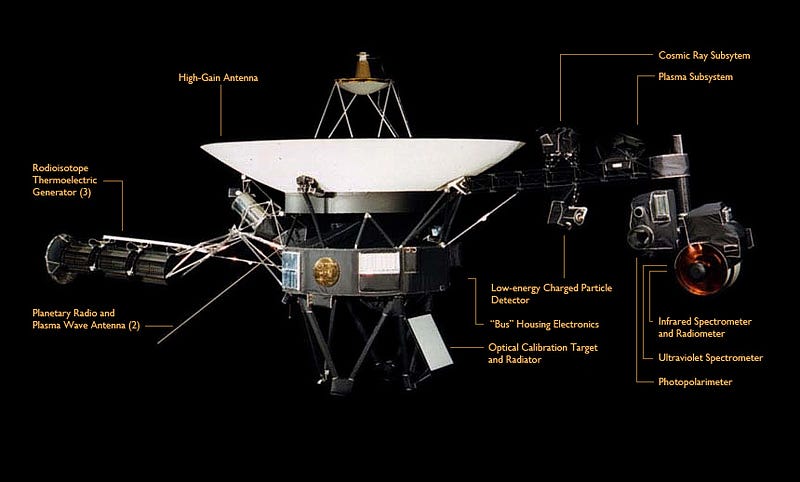
When it comes to space travel, the only factors keeping us from using Plutonium-238 as a power source for our missions are our reluctance to mess with nuclear power here on Earth, despite — and this includes the nuclear accidents on Three Mile Island, Chernobyl and Fukushima — their unparalleled record of health and environmental safety when compared to all other conventional power sources. That, and our not-in-my-backyard (NIMBY) mentality about it, despite what an honest assessment of the technology would lead us to conclude.
And as it stands, we’re slated to run out of Plutonium-238 in the United States before the next decade goes by, all because people can’t be bothered to have the science trump their unfounded fears.

Too bad, because as amazing as Philae was, we could have gotten years of science out of it, rather than 60 hours. Maybe we’ll draw the reasonable conclusion from this outcome, and commit to the success of science and the advancement of humanity and our knowledge, and accept the very small (but not quite zero) risk associated with it.
The Universe is out there, waiting for us all to discover it. Don’t let your fears cheat you out of it. It’s your knowledge, too.
Leave your comments at the Starts With A Bang forum on Scienceblogs!





